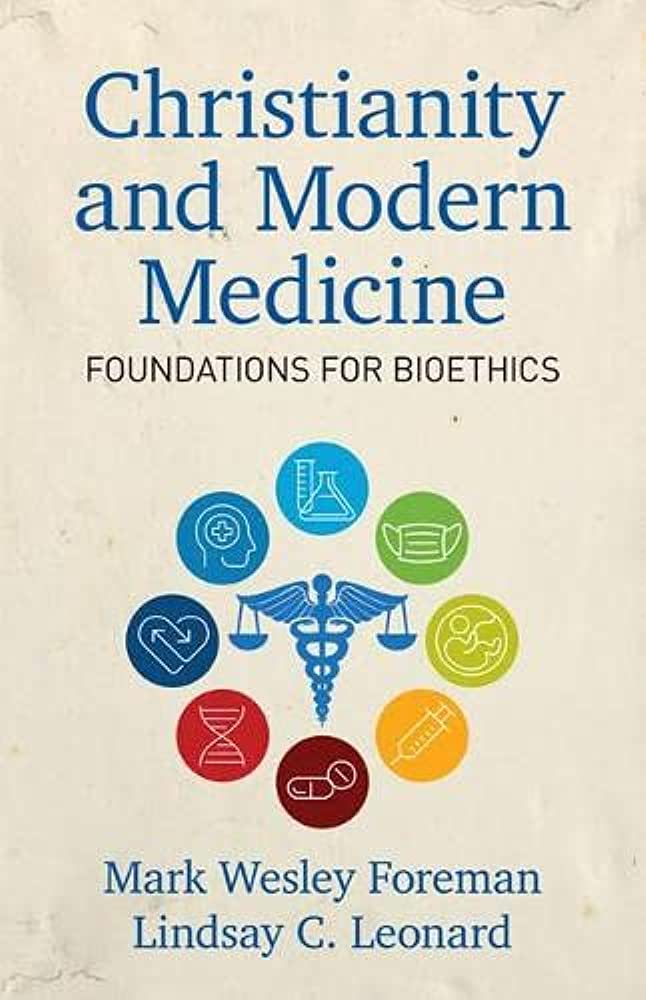Mark Wesley Foreman and Lindsay C. Leonard, eds.

Reviewed by Scott Stiegemeyer on 03/01/2023
Theological anthropology is the church’s battleground of our time. A disordered view of the body is at the root of many of our problems today. Transgender ideology, genetic engineering, abortion, and feminist philosophy are all depictions of distorted anthropology. Bioethics without a grounded theology of the body and an integrated vision of humanity amounts to policies and preferences.
Foreman and Leonard make a useful contribution to bioethics education with their new text. While not strictly speaking a book of theology, it addresses its subject matter with Christian assumptions about what it means to be human. The book recognizes that ethics flows from ontology. You have to know what a thing is before you can know its meaning, telos, and how it should be treated.
Their book has ten chapters. In chapter 1, Foreman and Leonard briefly explain common ethical theories such as consequentialism, deontology, divine command theory, and virtue ethics. Most bioethics textbooks have chapters about the various ethical theories. This book is no exception. What is exceptional is how well these things are explained for readers without a lot of background in philosophy.
Chapter 2 covers the basic principles of modern bioethics. In 1972, the reprehensible Tuskegee Syphilis Experiment was made public, spurring the effort to codify principles for ethical experimentation using human subjects. The result was the Belmont Report, issued in 1978, which identified three central guiding principles: respect for persons (informed consent), beneficence (risks-benefits analysis), and justice. Also in 1978, Tom Beauchamp and James Childress published their book, Principles of Biomedical Ethics, widely considered a standard bioethics textbook. They identified four guiding principles, not just for research but for all of medical ethics. These are similar to those of the Belmont Report: respect for autonomy, beneficence (do good), justice (fairness), and non-maleficence (do no harm). The story of much of modern bioethics is the story of the application of these principles.
Chapters 3–8 and 10 address major issues such as abortion, euthanasia, artificial reproductive technologies such as in vitro fertilization, and gene editing. One thing that stands out is devoting a chapter to infanticide instead of lumping it in with euthanasia. The pro-life argument is that there is no moral difference between a fetus and a newborn and since it would be unthinkable to kill a newborn, then feticide should be prohibited. But we are in an upside-down time when ethicists and physicians agree that there is no moral difference between a fetus and a newborn, but then say that since aborting a fetus is permissible, then so should be killing a newborn. Postnatal abortion, they call it.
Chapter 9 is on clinical ethics. This is about the day-to-day experience of health care providers. Topics in this chapter include informed consent, confidentiality, and medical paternalism.
The reader might be tempted to skip the more philosophical chapters at the beginning in order to dive right into the chapters about specific issues. It would be best if one did not do that. It is crucial that Christians and others begin to learn and relearn how to reason, how to make and evaluate moral judgments. This not only gives us tools we need to have discussions with serious people who don’t understand or adhere to Christianity, but it also helps us to navigate troubling new questions that don’t necessarily fit the bullet points or paradigms of issues we have already considered.
It is insufficient to simply know what we oppose; we also need to be able to explain our moral judgments and justify them with reasons. We need the skills to cogently respond to counter-arguments. Without these tools for reasoning, we run a higher risk of caricaturizing the views of others, employing logical fallacies in our arguments, and relying on bluster to carry the day.
This book would be a useful textbook for several reasons. In the first place, the chief concepts and issues are examined with a rare economy of words that gets to the point while still providing examples and cases to keep it from being dry. Secondly, it is clearly written, avoiding the convoluted prose sometimes found in college textbooks. The balance beam for every professor is to find proper course texts which are neither too far beyond the abilities of their typical student nor too simplistic to challenge the higher achievers.
But this is not just a book for college students. This is a book for pastors, DCEs, and other church workers. It is a book for medical professionals. And it is a book for anyone seeking to increase their knowledge or improve their understanding of this crucial field.



